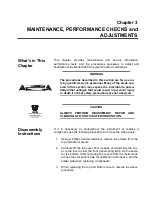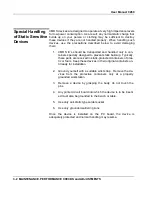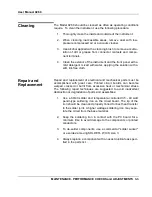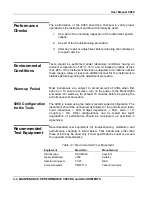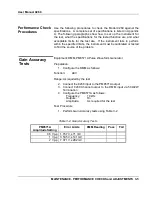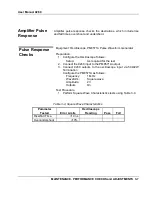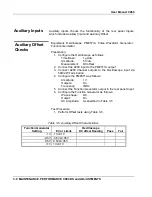
User Manual 9260
2-2 Portrayal
WARNING
For maximum safety, do not touch the product, test ca-
bles, or any other instrument parts while power is ap-
plied to the circuit under test. ALWAYS remove power
from the entire test system before connecting cables or
jumpers, installing or removing cards from the comput-
er, or making internal changes such as changing the
module address.
Do not touch any object that could provide a current
path to the common side of the circuit under test or
power line (earth) ground. Always keep your hands dry
while handling the instrument.
When using test fixtures, keep the lid closed while power is applied to
the device under test. Carefully read the Safety Precautions
instructions that are supplied with your test fixtures.
Before performing any maintenance, disconnect the line cord and all
test cables. Only qualified service personnel should perform
maintenance.
Performance
Checks
The instrument has been inspected for mechanical and electrical
performance before shipment from the factory. It is free of physical
defects and in perfect electrical order. Check the instrument for
damage in transit and perform the electrical procedures outlined in the
section entitled
Unpacking and Initial Inspection.






















